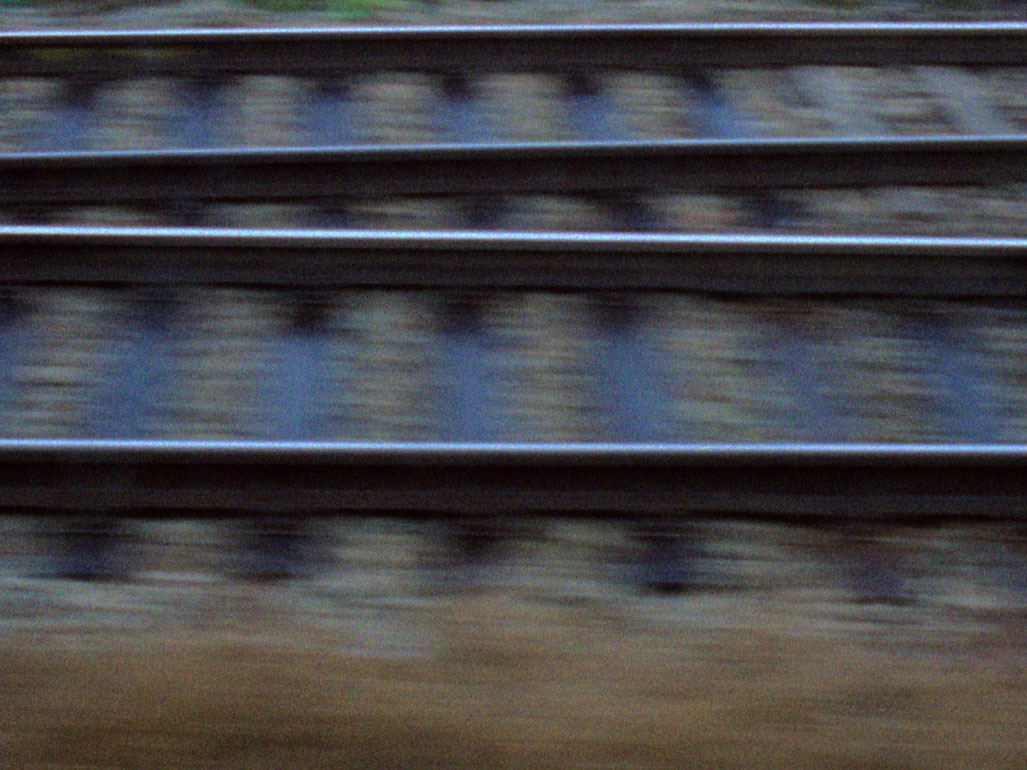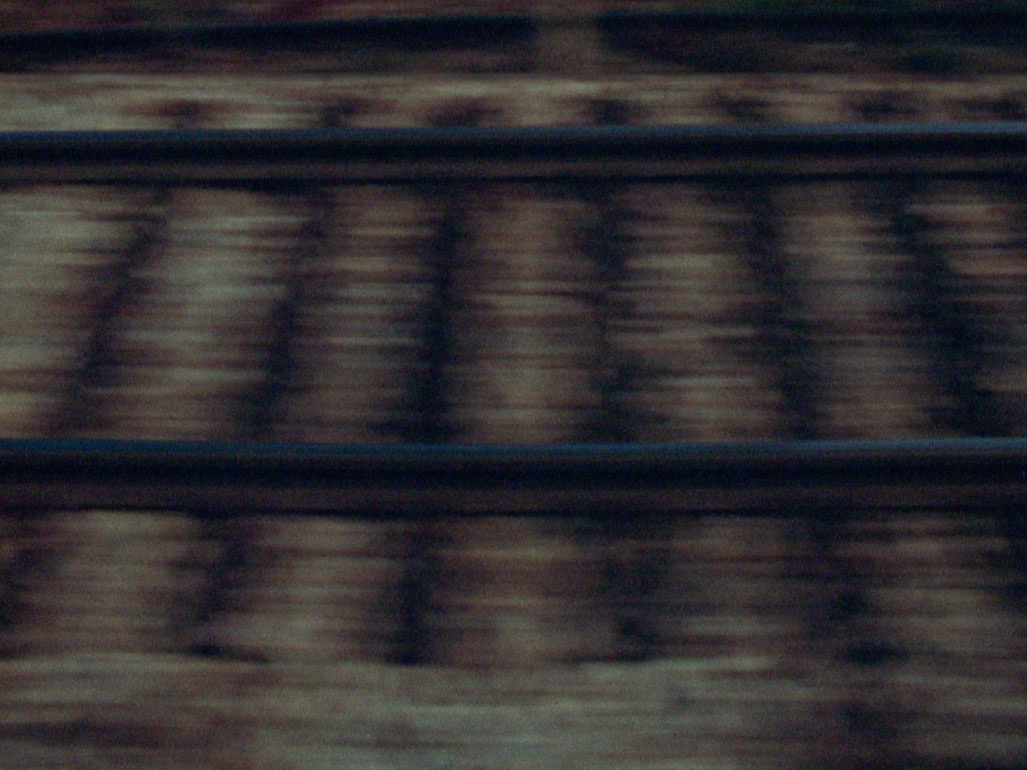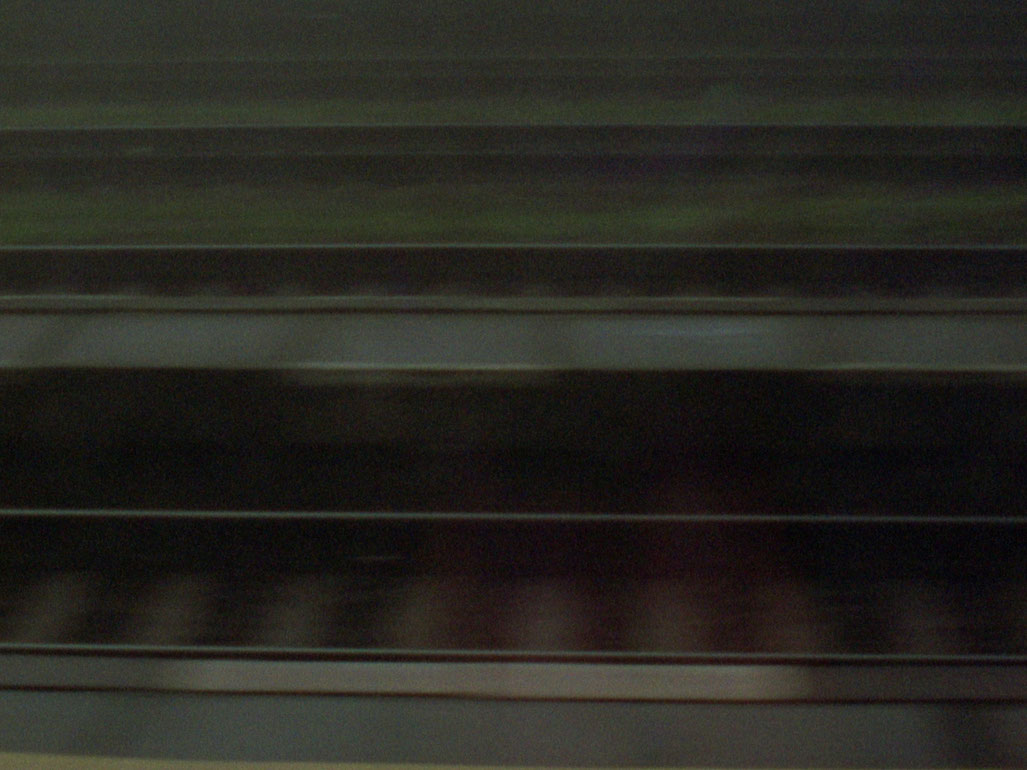Commute
“Commute” generally means “to exchange, convert, transfer, transform”, and Henry Hills’s film of the same name also focuses on this sort of interrelationship. Railroad tracks, filmed from a train window, form the material basis of a (filmic) perception in constant motion. For over ten years, Hills commuted by train between Vienna and Prague and couldn’t resist the temptation to use his Bolex to follow the view the railroad tracks were presenting to him along the way. Tracks, sometimes single, sometimes in pairs, branching, then straight again, and very many railroad ties, moving past too quickly for the eye to register: all of this forms the highly dynamic and amazingly rhythmic basis of this minimalist hymn to train travel. The whole thing is matched up with an equally swelling, staccato-like collage of a myriad of musical fragments from tunes, from jazz, blues and country to rock and metal, in which the rhythms – and myths! – of train travel were “enacted” over and over again.
From there, the artful montage unfolds its full effectiveness and reveals a more than trivial reciprocity between film and train journey. The railroad track with its struts mutates in front of the eye, which can barely follow along, into the appearance of a celluloid strip rattling past at high speed. Conversely, the different directions of movement, sometimes forwards, sometimes backwards, as well as the acceleration and deceleration of the montaged images, outline an elementary sensorium of mobility. Together with the fragmentary music archive of an entire century, a synesthesia of a very special kind emerges: the nostalgia and secret longing of the much-invoked “Mystery Train” find their most essential visualization anchored in material rhythm. (Christian Höller)
(Translation by John Wojtowicz)
Commute
2024
Austria, Czech Republic
9 min



